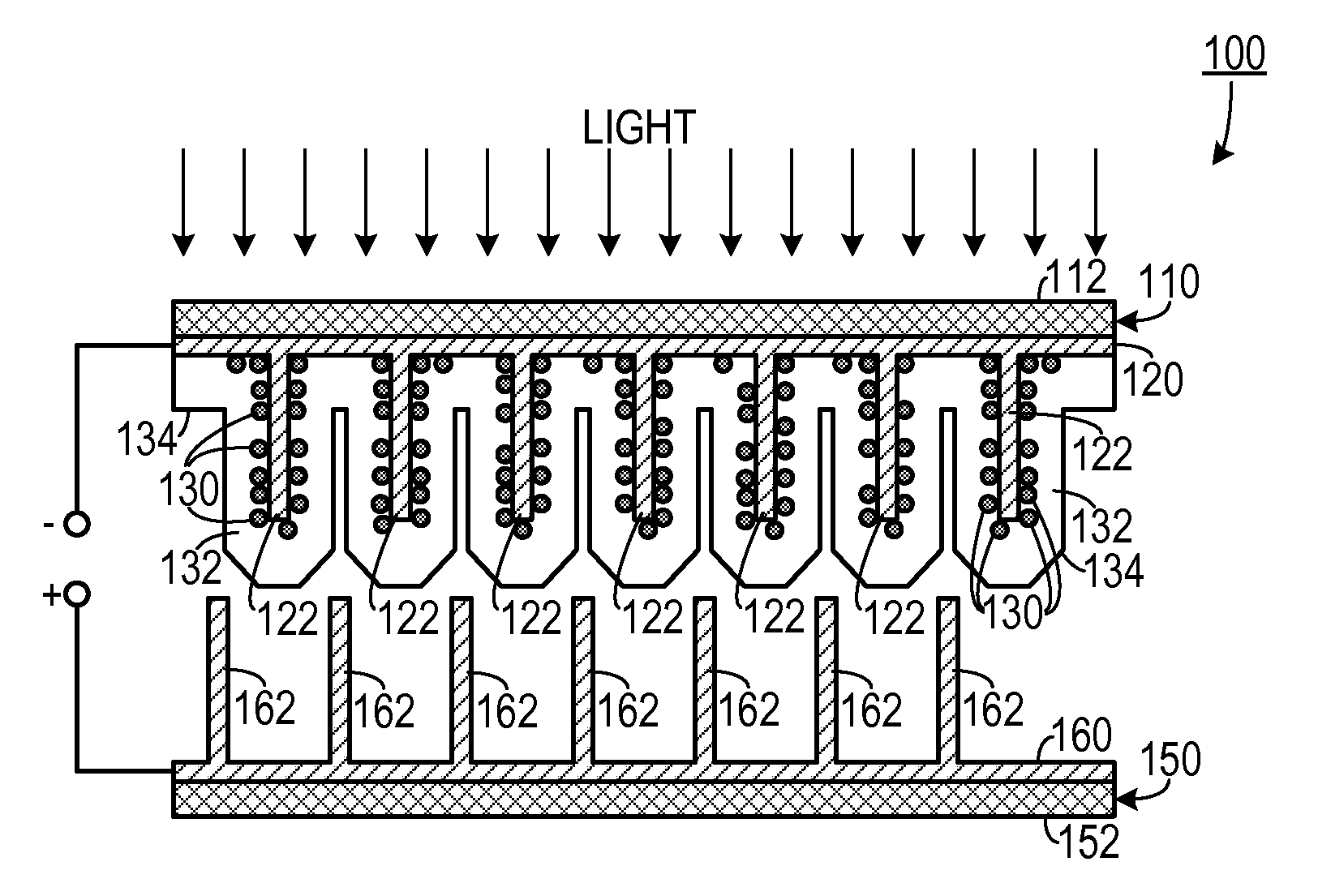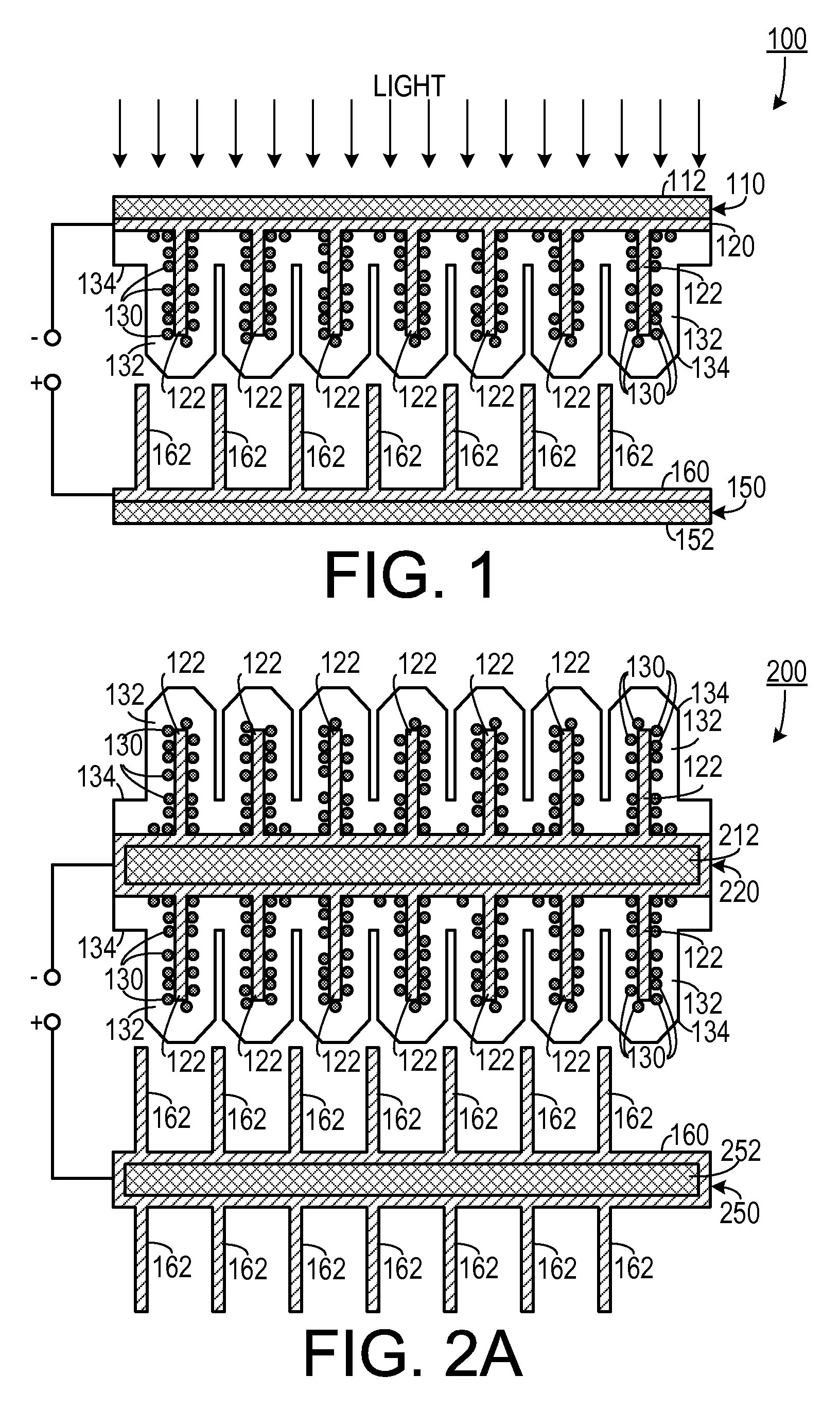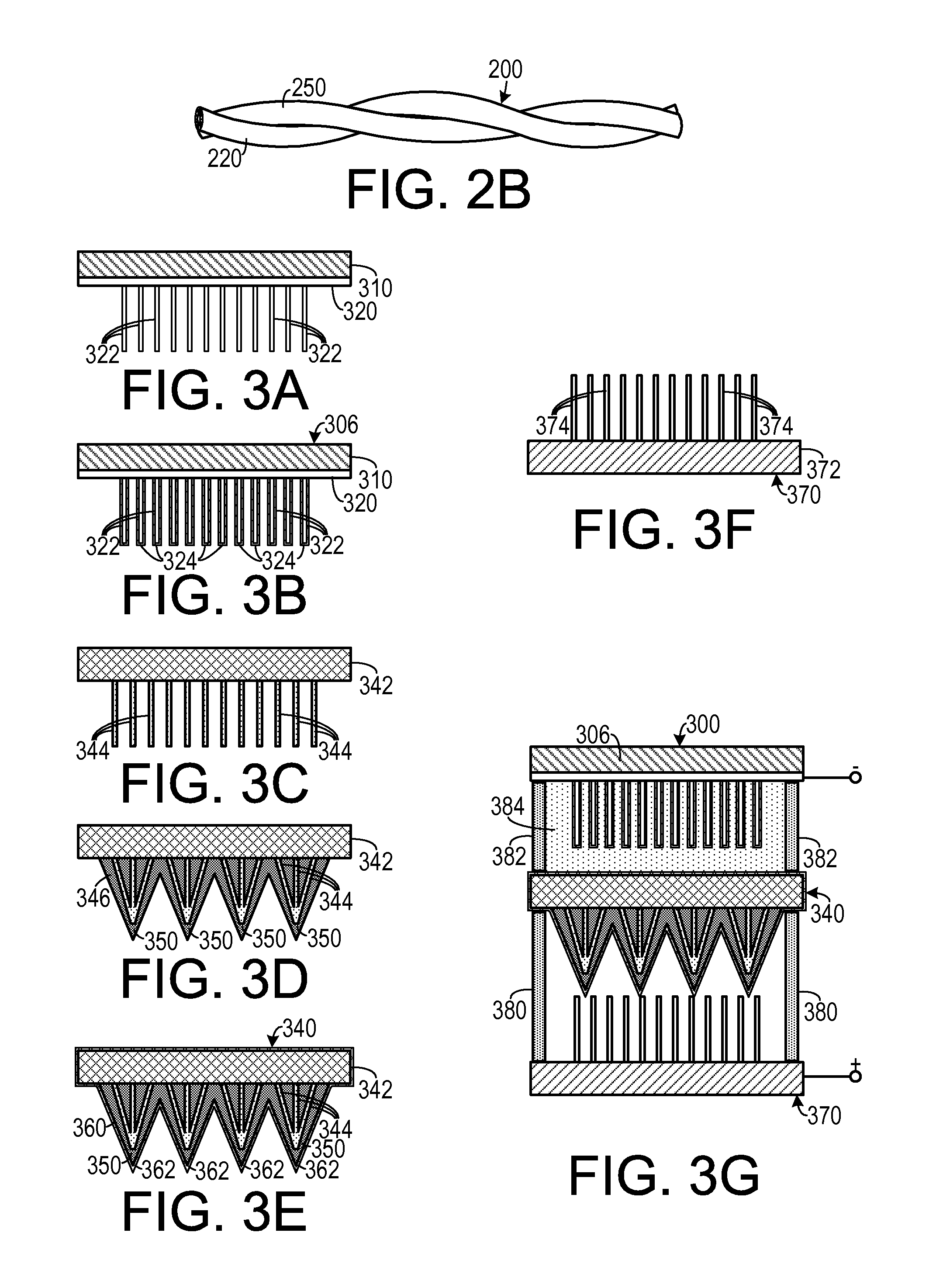Hybrid solar nanogenerator cells
a nano-generator and solar energy technology, applied in the direction of machines/engines, sustainable manufacturing/processing, machines/engines, etc., can solve the problems of low power output of nano-generators, low scalability, and high cost of concentrators
- Summary
- Abstract
- Description
- Claims
- Application Information
AI Technical Summary
Benefits of technology
Problems solved by technology
Method used
Image
Examples
Embodiment Construction
[0031]A preferred embodiment of the invention is now described in detail. Referring to the drawings, like numbers indicate like parts throughout the views. As used in the description herein and throughout the claims, the following terms take the meanings explicitly associated herein, unless the context clearly dictates otherwise: the meaning of “a,”“an,” and “the” includes plural reference, the meaning of “in” includes “in” and “on.”
[0032]As shown in FIG. 1, one embodiment of a hybrid solar and mechanical power generator 100 includes a dye-sensitized solar power generating portion 110 that is electrically coupled to a first electrode 120. The solar power generating portion 110 includes a transparent substrate 112 (such as an ITO substrate) affixed to the first electrode 120. A plurality of semiconductor nanorods 122 (such as ZnO nanorods), also referred to as “nanowires,” extend from the first electrode. A light absorbing material having a predetermined optical absorption range is a...
PUM
| Property | Measurement | Unit |
|---|---|---|
| distances | aaaaa | aaaaa |
| aspect ratio | aaaaa | aaaaa |
| solar power | aaaaa | aaaaa |
Abstract
Description
Claims
Application Information
 Login to View More
Login to View More - R&D
- Intellectual Property
- Life Sciences
- Materials
- Tech Scout
- Unparalleled Data Quality
- Higher Quality Content
- 60% Fewer Hallucinations
Browse by: Latest US Patents, China's latest patents, Technical Efficacy Thesaurus, Application Domain, Technology Topic, Popular Technical Reports.
© 2025 PatSnap. All rights reserved.Legal|Privacy policy|Modern Slavery Act Transparency Statement|Sitemap|About US| Contact US: help@patsnap.com



